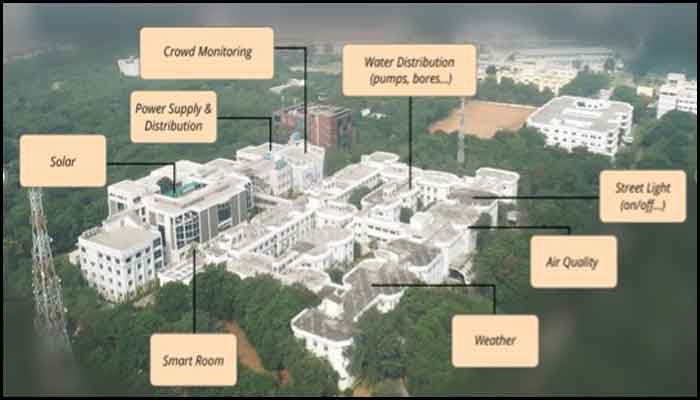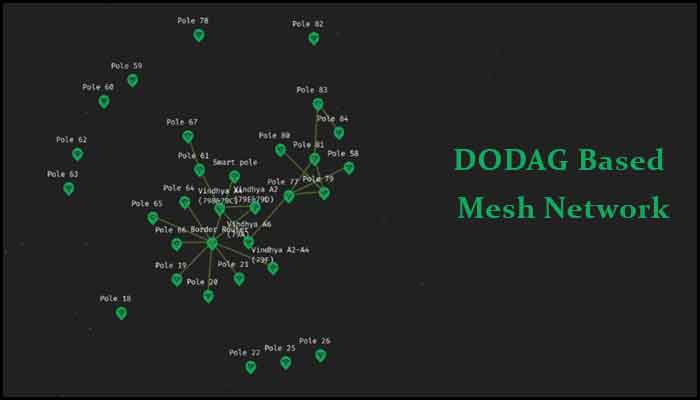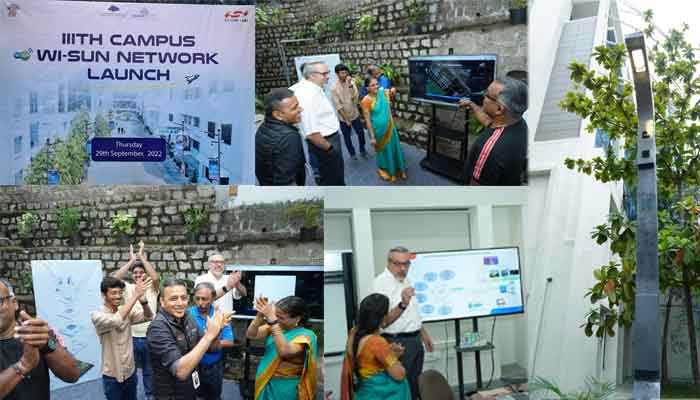The low-powered IoT mesh network rolled out in partnership with Silicon Labs targets smart-city operations to improve residents’ quality of life.
Think smart street lights and a pole with embedded technology such as light-sensing photocells and other sensors come to mind. However, if IIITH has its way, a smart lamppost that goes beyond intelligent street lighting is set to boost the development of smart cities in India.
In a unique initiative that is the first of its kind in India, the Smart City Living Lab at the International Institute of Information Technology, Hyderabad, has tied up with one of its corporate partners Silicon Labs to unveil a campus-wide Wi-SUN network for enabling research and solutions of IoT-based smart cities. Wi-SUN, which stands for Wireless Smart Ubiquitous Networks, is an open-standards-based technology developed to meet the needs of smart-city operations. Despite its slower communication speeds compared to Wi-Fi, it scores over the latter with its longer reachability, stable connection in the event of obstacles and lower power consumption.


IoT Networks
IIITH Smart City Living Lab is set up as an enterprise of MEITY (Ministry of Electronics & IT), National Cities Mission, and the Government of Telangana, with knowledge support from EBTC (European Business Technology Council) and Silicon Labs, Intel, and Saint Gobain as the corporate partners. Prof. Ramesh Loganathan says that the Smart City Living Lab has been serving as a testbed for various start-ups and research over the past year. “IIITH’s campus consists of sensor networks monitoring different verticals such as water, energy, air pollution, solar generation, etc., as well as a strong standards-based data network. The Wi-SUN network will add to the existing modes of sensor communications on campus, including Wi-Fi and LORA”. According to Anuradha Vattem, Lead Architect at Living Lab, “Wi-SUN is a mesh network that allows node-to-node communication. It needs no towers or expensive communications infrastructure and facilitates sensors to connect easily to the cloud. Plus, it can respond better to outages due to multiple communication paths.” Prof. Aftab Hussain adds that every sensor node in the Wi-SUN network doubles up as a router. “So, each time you install and deploy a node, you are really expanding the network itself.”


More Than Lighting Controls
In the initial pilot, 30 sensor nodes were installed on some of the campus street lights controllable through the cloud to test the Wi-SUN network. Prof. Hussain explains that street light poles were chosen for Wi-SUN coverage due to their features such as uniformness, even distribution throughout the campus and the fact that they are powered by the grid. “Switching lights on and off at will from a remote location is just one part of the project; what we are really excited about is that we can now connect any other sensor or IoT device working on Wi-SUN to the cloud through this network,” he says.
With Silicon Labs providing the radio modules or chips, the Smart City Research Centre (SCRC) team created everything from scratch. “From the baseboard to the relay circuit to the controller, everything was made in-house. We tested it out in rugged weather conditions including the recent torrential rains, before the final demo in the presence of Mr Ross Sabolcik, SVP of Industrial and Commercial at Silicon Labs,” says Anuradha.
In addition to an attractive dashboard displaying the streetlights currently hooked to the network and their exact locations on campus, the team calculated the latency involved in signal transmission between the nodes. Vaibhav Naware, one of the engineers involved in the project says, “The latency calculation will enable us to compare other similar networks with respect to different data rates”. This, coupled with information on the Received Signal Strength Indicator (RSSI), is displayed in the form of histograms. “With the entire campus serving as a living setup for monitoring various IoT nodes, determining the effects of temperature and humidity on latency and RSSI of the Wi-SUN nodes serve as good research problems for IoT evangelists”, remarks Ajai Mathew, visiting faculty at SCRC.
Enabling The Lamppost
While the project at IIITH aims to convert all campus street lights to Wi-SUN smart street lights, the larger goal is to enable some of the poles to deliver more than just light. Many cities worldwide are upgrading their street lights not only to make them more energy efficient but also to drive them as ‘enablers’ of smart city solutions. With IIITH serving as a ‘smart campus’ that uses various electronic methods and sensors to collect critical data on air quality, weather, energy consumption, water quality and others, upgrading the humble street lights to deliver these ‘smart city’ services makes sense. Currently, the Living Lab is piloting a single, smart lamppost equipped with the relevant sensors as well as a camera and speaker. Information gathered about air quality and weather is delivered through a digital display. “The camera enhances public safety and could be used for crowd management. The speaker has multiple uses, from serving as a guide for the visually impaired to disseminating local weather information. For instance, wouldn’t it be cool if we were encouraged to keep our umbrellas handy in the event of an impending cloud burst?” exclaims Anuradha.
Inviting Smart City Solutions
A smart lamppost may present significant opportunities for cities to reap the benefits of embracing technology. With this in mind, the initial deployment of Wi-SUN on campus has laid the foundation for future research studies into this new-age mesh network. “Wi-SUN is an emerging standard for large-scale sensor networks with an architecture that doesn’t need towers or gateways. It has so many use cases in smart cities. We’re so glad to have this network setup at the IIITH Smart City Living Lab allowing us to study this protocol and its use models,” says Prof. Loganathan. The team has plans to include challenges for start-ups to build solutions for smart cities using the Wi-SUN network to help take smart city innovations to cost-effective deployment.
Sarita Chebbi is a compulsive early riser. Devourer of all news. Kettlebell enthusiast. Nit-picker of the written word especially when it’s not her own.

